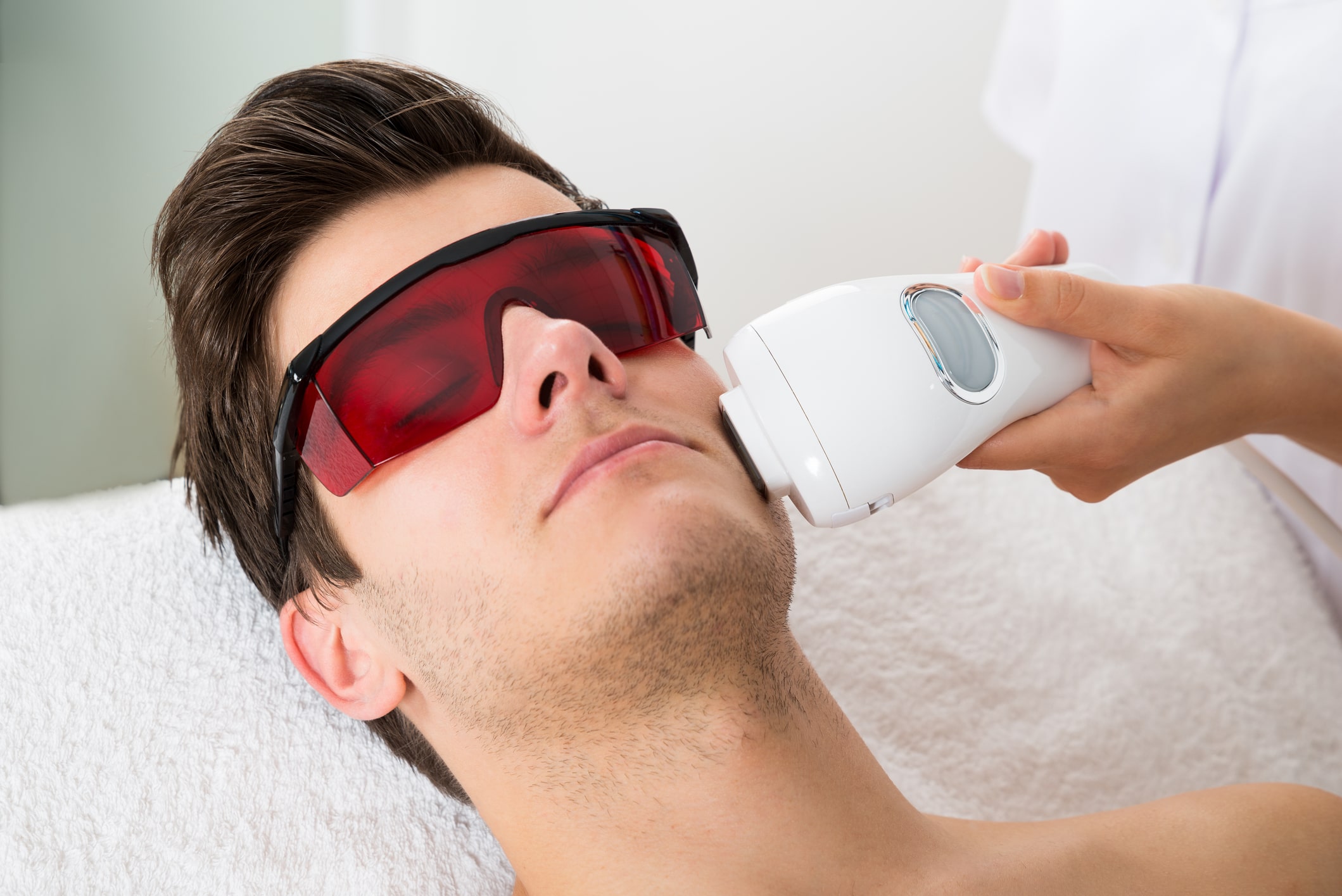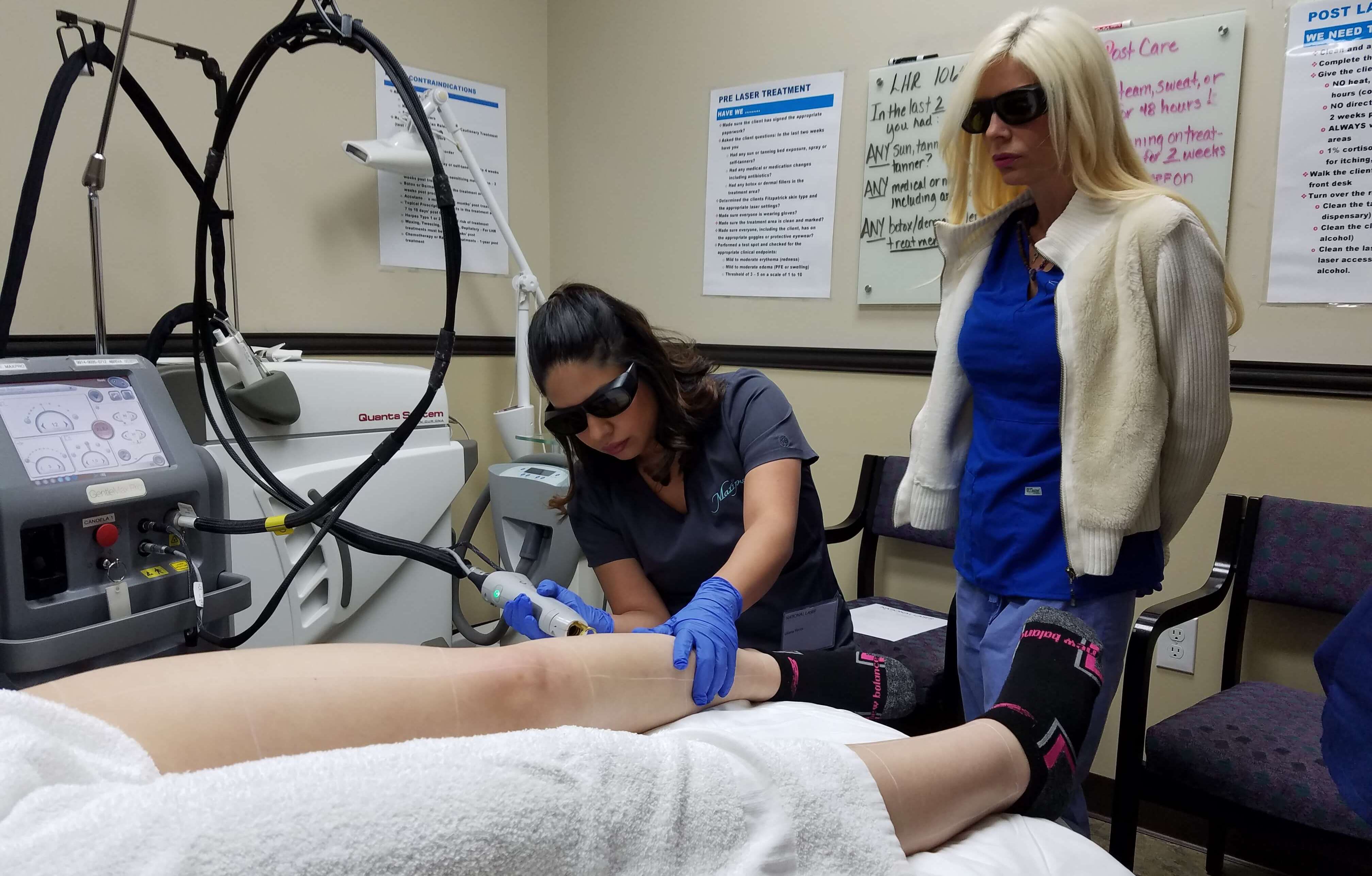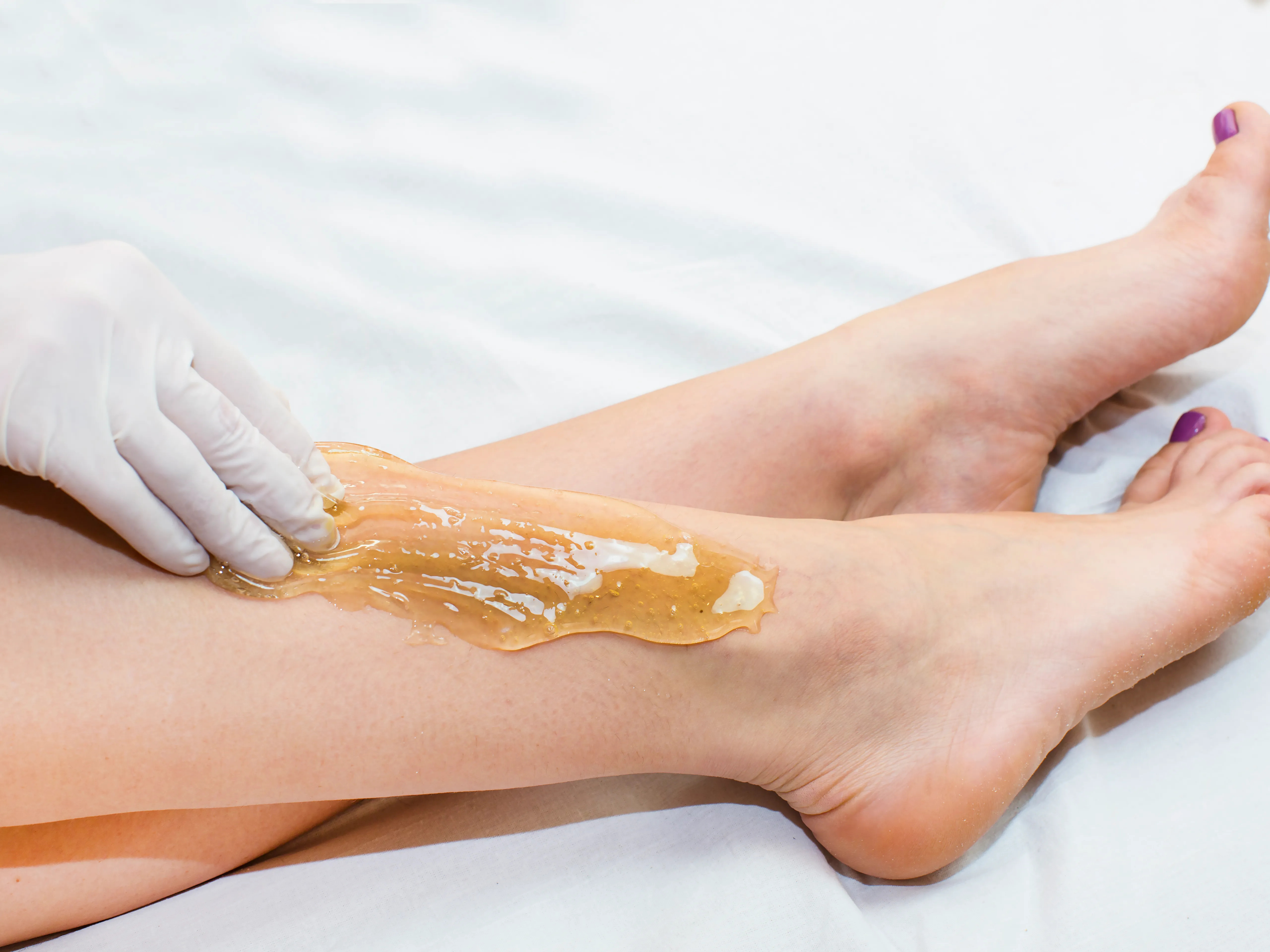

FAQs
Laser Hair Removal When Do You See Results
Modified: August 5, 2023
Looking for answers to general questions about laser hair removal? Discover when you can expect to see results with this helpful guide.
(Many of the links in this article redirect to a specific reviewed product. Your purchase of these products through affiliate links helps to generate commission for Under-tec.com, at no extra cost. Learn more)
Table of Contents
Introduction
Welcome to the world of laser hair removal, where the days of shaving, waxing, and plucking are becoming a thing of the past. Laser hair removal offers a long-term solution to unwanted hair, leaving you with smooth and hair-free skin. But how long does it take to see results? In this article, we will explore the timeline for laser hair removal results and what factors can impact the outcome.
Laser hair removal is a popular cosmetic procedure that uses concentrated beams of light to target and destroy hair follicles. This targeted approach ensures that the surrounding skin remains undamaged, making it a safe and effective method for hair removal.
When you undergo laser hair removal, the laser energy is absorbed by the pigment in your hair follicles. This heat destroys the hair follicle, preventing further hair growth. However, since hair grows in cycles, multiple sessions are required to target all the hair follicles effectively.
It’s important to note that results can vary from person to person. Several factors can influence the efficacy and speed of your laser hair removal results. Factors such as hair color, skin tone, hair thickness, and the location of the treatment area can all play a role in the outcome.
Now that we have a basic understanding of how laser hair removal works, let’s dive into the factors that can affect your laser hair removal results in more detail.
How Does Laser Hair Removal Work?
Laser hair removal works by targeting the pigment in the hair follicles and damaging them with high-intensity laser energy. The melanin in the hair follicles absorbs the light, which is then converted into heat, ultimately leading to the destruction of the follicle.
During the laser hair removal procedure, a handheld device emits a laser beam that passes through the skin and is absorbed by the pigment in the hair follicles. The heat generated by the laser damages the hair follicles, inhibiting their ability to grow new hair.
It’s important to note that laser hair removal is most effective on darker hair because the pigment melanin present in dark hair absorbs more laser energy. Consequently, individuals with dark hair and fair skin tend to achieve the best results with laser hair removal.
The procedure is relatively quick, depending on the size of the treatment area. Small areas such as the upper lip or underarms may take just a few minutes, while larger areas like the legs or back may take up to an hour.
Laser hair removal targets hair in its active growth phase, called the anagen phase. Since not all hair follicles are in this phase at the same time, multiple sessions are required to effectively treat all the hair follicles. Typically, six to eight treatments spaced several weeks apart are recommended for optimal results.
While laser hair removal offers long-lasting hair reduction, it’s important to note that it may not permanently eliminate all hair. Some individuals may experience regrowth in the treated area over time, but the hair will generally be finer and lighter than before.
Now that we have a better understanding of how laser hair removal works, let’s explore the factors that can affect your results in more detail.
Factors That Affect Results
While laser hair removal is a highly effective method for long-term hair reduction, the outcome can vary depending on several factors. Understanding these factors can help set realistic expectations and ensure the best possible results.
- Hair Color: The color of your hair plays a significant role in the results of laser hair removal. Dark hair absorbs more laser energy and is therefore more easily targeted. As a result, individuals with darker hair tend to experience better outcomes with laser hair removal compared to those with lighter or blonde hair.
- Skin Tone: Laser hair removal works best on individuals with lighter skin tones and darker hair, as there is a greater contrast between the pigments. However, advancements in technology have made laser hair removal accessible to individuals with darker skin tones as well, as specialized lasers are designed to target melanin without causing harm to the surrounding skin.
- Hair Thickness: The thickness of your hair can impact the results of laser hair removal. Coarser and thicker hair absorbs more laser energy, making it easier to target and destroy the hair follicles. On the other hand, fine or thin hair may require additional sessions to achieve the desired outcome.
- Treatment Area: The location of the treatment area can influence the results of laser hair removal. Areas with thinner and more delicate skin, such as the face or bikini area, may require more sessions to achieve optimal results. Additionally, areas with hormonal influences, such as the chin or upper lip, may also require more maintenance sessions over time.
- Number of Sessions: Laser hair removal typically requires multiple sessions to target all the hair follicles effectively. The exact number of sessions needed varies depending on factors such as hair color, skin tone, hair thickness, and treatment area. On average, six to eight sessions are recommended for the best possible results.
- Consistency: Consistency is key when it comes to laser hair removal. Following the recommended treatment schedule and attending all sessions can significantly impact the results. Skipping or delaying sessions may lead to ineffective treatment and extended timelines for achieving desired outcomes.
By considering these factors and having open communication with your laser hair removal provider, you can ensure that you have realistic expectations and achieve the best possible results with your treatment.
Expected Timeline for Results
When it comes to laser hair removal, patience is key. It’s important to understand that results are not immediate and that it takes time for the full benefits of laser hair removal to become apparent. Each person’s hair growth patterns and response to treatment vary, but here is a general timeline to give you an idea of what to expect.
After your first laser hair removal session, you may not notice any significant changes in hair growth. This is because only a fraction of your hair follicles will be in the active growth phase, while others may be dormant or shedding. It is during subsequent sessions that you will start to see more noticeable results.
Typically, after 2 to 3 sessions, you may begin to notice a reduction in hair growth in the treated area. The hair that does grow back will likely be finer and lighter than before. This is a sign that the laser treatment is working and that the hair follicles are being damaged.
By the fourth or fifth session, you can expect more significant hair reduction. The treated area will have noticeably fewer hairs, and the remaining hairs may be thinner and sparser. However, it’s important to note that individual responses to treatment can vary, and some individuals may require more sessions to achieve their desired results.
As you progress through your laser hair removal sessions, the intervals between treatments may also increase. This is because the goal is to target hair follicles during their active growth phase, and so treatments are spaced out to catch newly growing hairs. Your provider will determine the optimal timing for your sessions based on your hair growth cycle and treatment progress.
By the end of your recommended treatment cycle, which usually consists of 6 to 8 sessions, you should expect to see a significant reduction in hair growth. The treated area will appear smoother and hair-free, with long-lasting results. Keep in mind that some hair may regrow over time, but it will generally be thinner and lighter in color.
It’s important to note that maintenance sessions may be necessary to maintain the results of laser hair removal. These sessions are typically scheduled once or twice a year or as needed, depending on the individual. Regular maintenance sessions can help ensure that any new hair growth is effectively targeted and managed.
In summary, laser hair removal results take time and consistency. While some hair reduction may be noticeable after a few sessions, it is after completing the recommended treatment cycle that you will achieve the desired outcome. Patience and adherence to your treatment schedule will ultimately lead to long-lasting results and smoother, hair-free skin.
Immediate Effects After a Laser Hair Removal Session
After a laser hair removal session, you may experience some immediate effects. These effects are typically mild and temporary, resolving on their own within a few hours to a couple of days. Understanding these immediate effects can help you anticipate what to expect after your treatment.
One commonly reported immediate effect is redness or mild irritation in the treated area. This is a normal response as the laser energy can cause temporary inflammation of the hair follicles. The redness usually subsides within a few hours, but it may persist for up to 24-48 hours in some cases. Applying a cool compress or aloe vera gel can help soothe the skin and reduce redness.
You may also experience a sensation similar to a sunburn or slight discomfort during or immediately after the treatment. This sensation is generally well-tolerated and fades quickly. If needed, over-the-counter pain relievers can help alleviate any discomfort.
In some cases, individuals may notice a slight crusting or scabbing of the treated hair follicles. This is a normal part of the body’s healing process and will resolve on its own within a few days. It’s essential to avoid picking or scratching at any scabs to prevent infection and ensure proper healing.
Immediately following the treatment, it’s advisable to avoid activities that may further irritate the treated skin. This includes avoiding hot showers or baths, saunas, steam rooms, excessive sweating, and sun exposure. It’s important to protect the treated area from the sun by applying a broad-spectrum sunscreen with a high SPF to prevent any potential complications.
While some temporary effects may be noticeable after a laser hair removal session, it’s important to keep in mind that these effects are typically mild and resolve quickly on their own. If you have any concerns or experience any unusual side effects, it’s best to consult with your laser hair removal provider.
Now that we’ve explored the immediate effects, let’s move on to the initial results that can be seen after multiple laser hair removal sessions.
Initial Results After Multiple Sessions
After undergoing multiple laser hair removal sessions, you can expect to see noticeable improvements in hair reduction and the overall appearance of the treated area. While individual results may vary, there are some general trends and outcomes that can be expected.
Typically, after about 2 to 3 sessions, you should start to see a reduction in hair growth in the treated area. The hair that does grow back will likely be finer and lighter in color. This is a positive sign that the laser treatment is effectively targeting and damaging the hair follicles.
With each subsequent session, you can expect to see further hair reduction and a decrease in the thickness and density of the remaining hair. The treated area will appear smoother, and you may notice that you need to shave or remove hair less frequently between sessions.
It’s important to note that the exact timeline for visible results can vary depending on factors such as hair color, skin tone, hair thickness, and the specific treatment area. However, by the fourth or fifth session, many individuals experience a noticeable difference in the treated area.
Keep in mind that laser hair removal targets hair follicles in their active growth phase, called the anagen phase. Since hair follicles go through different growth cycles, not all hair will be targeted during each session. This is why multiple sessions are necessary to effectively treat all the hair follicles.
During the treatment process, it’s important to follow the recommended treatment schedule and not skip sessions. Consistency is key to achieving the best and most long-lasting results. Your laser hair removal provider will create a customized treatment plan based on your individual needs and hair growth patterns.
While the initial results after multiple sessions are promising, it’s important to note that laser hair removal is not a permanent solution. Some hair may regrow over time, but it will generally be finer and lighter in color. To maintain the results, occasional maintenance sessions may be necessary.
As you continue with your laser hair removal sessions, you will likely experience increased satisfaction with the overall appearance and smoothness of the treated area. Remember to communicate openly with your laser hair removal provider about your expectations and any concerns you may have.
Now let’s explore the final results of laser hair removal and how to maintain them.
Final Results and Maintenance
The final results of laser hair removal can be impressive, providing long-lasting hair reduction and smoother skin. After completing the recommended number of sessions, you can expect a significant reduction in hair growth in the treated area.
While some hair may regrow over time, it will typically be finer and lighter than before the treatment. The treated area will feel smoother and more manageable, with a noticeable decrease in the need for frequent hair removal methods such as shaving, waxing, or plucking.
To maintain the results of laser hair removal, it’s important to follow any aftercare instructions provided by your laser hair removal provider. This may include avoiding sun exposure, maintaining a skincare routine that is gentle on the treated area, and scheduling regular maintenance sessions as needed.
Maintenance sessions are typically recommended once or twice a year, depending on individual needs and hair regrowth. These sessions help to target any new hair growth and ensure that the results are maintained over the long term.
Additionally, it’s important to protect your skin from excessive sun exposure after laser hair removal. UV exposure can increase the risk of complications and can also stimulate new hair growth. Applying a broad-spectrum sunscreen with a high SPF to the treated area before sun exposure is advised.
Some individuals may experience occasional hair regrowth in the treated area, which can be managed with touch-up sessions as needed. It’s important to communicate openly with your laser hair removal provider about any concerns or changes you may notice in the treated area.
It’s important to note that laser hair removal results can vary from person to person. Factors such as hair color, skin tone, hair thickness, and treatment area can all influence the outcome. It’s crucial to have realistic expectations and understand that complete hair removal is unlikely, but significant and long-lasting hair reduction can be achieved.
In summary, the final results of laser hair removal are often impressive, providing long-lasting hair reduction and smoother skin. Maintenance sessions and proper skincare can help maintain the results over time. By following these guidelines and maintaining open communication with your laser hair removal provider, you can enjoy the benefits of laser hair removal for years to come.
Conclusion
Laser hair removal offers a long-lasting solution to unwanted hair, providing smoother and hair-free skin. While the timeline for results may vary from person to person, understanding the process and factors that can affect outcomes is essential for managing expectations.
During laser hair removal, concentrated beams of light target and damage hair follicles, resulting in a reduction in hair growth over time. Factors such as hair color, skin tone, hair thickness, and treatment area can affect the results. Darker hair and lighter skin tend to yield the best outcomes.
After multiple laser hair removal sessions, you can expect to see initial results, including a reduction in hair growth and finer, lighter hair. By completing the recommended number of sessions, you can achieve significant hair reduction and smoother skin in the treated area.
Maintaining the results of laser hair removal involves following aftercare instructions, protecting the treated area from sun exposure, and scheduling occasional maintenance sessions. Regular communication with your laser hair removal provider is crucial for addressing any concerns or maintaining the desired outcome.
In conclusion, laser hair removal provides a long-term solution to unwanted hair, resulting in smoother and hair-free skin. By understanding the process, considering the factors that can influence results, and following proper maintenance, you can enjoy the benefits of laser hair removal and achieve your desired outcome.








